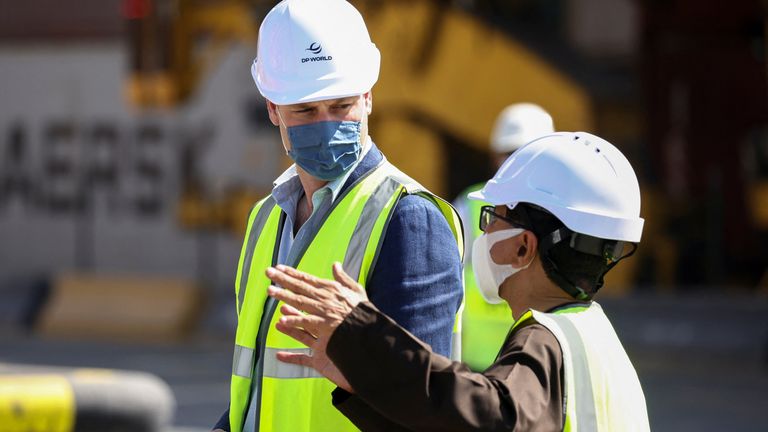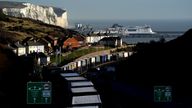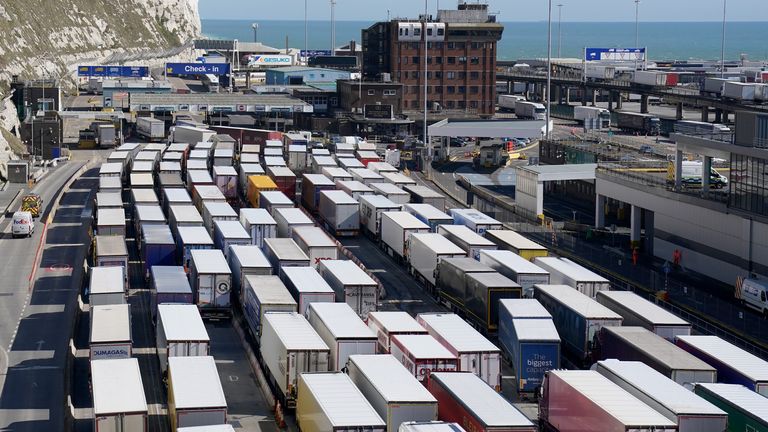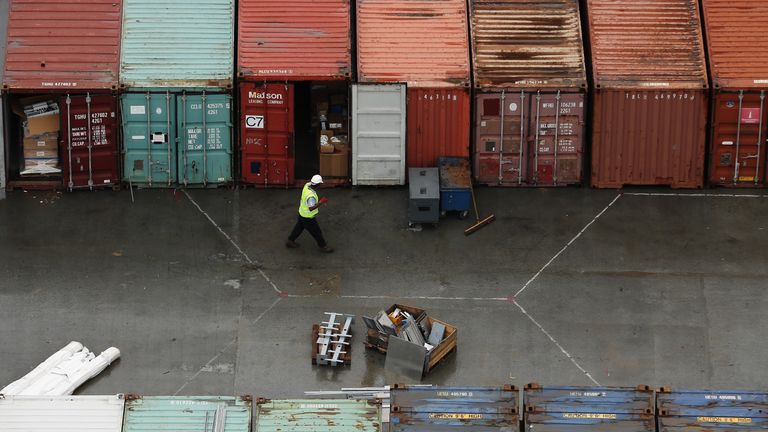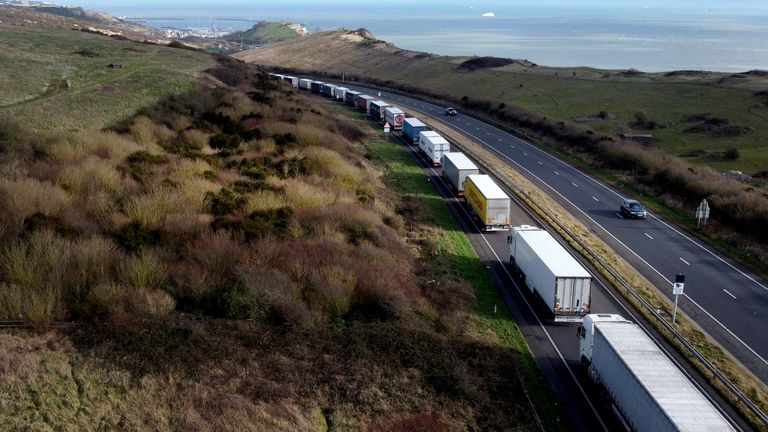The reasons P&O Ferries is cutting jobs again – and there are many
It is barely three years since DP World, the Dubai-based logistics giant, paid £322m for P&O Ferries.
At the time of the deal, in February 2019, Sultan Ahmed Bin Sulayem, DP World’s chairman and chief executive, said he was delighted to be acquiring such a “strong, recognisable brand”.
“P&O Ferries has delivered a robust performance in recent years and we aim to drive further value through increasing efficiencies and offering value-added solutions to our customers,” he said.
“Overall the transaction offers compelling value strategically and financially, and we look forward to P&O Ferries contributing to driving shareholder value in the coming years.”
Read more:
What are the rights of workers and passengers affected by the mass sackings?
With the benefit of hindsight, it was a disastrous deal.
P&O Ferries Holdings lost £38.82m in 2019 and in 2020, the year COVID-19 first struck, it lost a further £85.95m.
The accounts for 2021 have yet to be formally filed but the company said on Thursday that losses had increased to £100m during the latest year.
That is getting on for a quarter of a billion pounds worth of losses to date and the company clearly feels things are going to remain tough.
Second round of cuts
These are not the first job cuts at P&O Ferries since DP World bought the business.
In an early response to the pandemic, it made some 1,100 employees redundant, which at the time represented just over a fifth of the workforce.
However, after an appeal for support from the government was turned down, the business found itself being increasingly propped up by DP World. The business was given a £30m loan from its parent in November 2020 and a further loan of £10m in March last year.
It would be a mistake, however, to say that all of the operator’s problems stem from the pandemic.
Brexit has also clearly contributed to its difficulties.
In the pre-pandemic and pre-Brexit period, P&O Ferries was carrying some two million units of freight per year, but that is understood to have fallen as trade in goods with the EU has fallen.
This will have affected the Hull-Rotterdam crossing in particular, and it is also understood that, with fewer Irish trucking firms using Great Britain as a “land bridge” to and from continental Europe, traffic on the Liverpool-Dublin crossing will have been hurt.
In its latest results, the company singled out the Northern Ireland protocol, part of the UK’s post-Brexit trade deal with the EU, as having been problematic, potentially creating headaches on the Cairnryan-Larne crossing between Scotland and Northern Ireland.
But others in the industry believe that, with Northern Ireland’s unique status as being both inside the UK and inside the EU’s single market, this crossing ought to remain solidly profitable. Before the pandemic, there were up to seven daily crossings from Cairnryan to Larne, with almost a quarter of all roll-on-roll-off traffic to Northern Ireland coming via Larne.
A further millstone around the company’s neck is the money that it owes to the Merchant Navy Ratings Pension Fund.
This industry-wide fund, which manages the retirement savings of some 25,000 seafarers, is sponsored by around 100 employers but P&O Ferries reportedly owes the fund more than any other sponsors.
The latest accounts published by the company recognised a liability of £146m owed to the fund.
P&O Ferries evidently feels that, as a result of all this, more cost reductions are now in order.
Some 800 employees have been handed redundancy notices which, when they have departed, will leave P&O Ferries with some 2,200 employees.
That, according to the company, will secure the future viability of the business.
The irony is that, when it acquired P&O Ferries, DP World knew the business reasonably well.
It had first bought P&O – arguably the most famous name in Britain’s maritime industry – in 2006 for £3.33bn from under the nose of Hong Kong-based Hutchison Ports, owner of the Felixstowe and Harwich terminals in East Anglia and Temasek, Singapore’s sovereign wealth fund, which had been building a stake in P&O.
At the time, P&O consisted not only of its ferries operations, but also owned 29 container terminals around the world, including Southampton and Tilbury in Essex.
Shortly afterwards, P&O Ferries was sold to DP World’s parent and majority shareholder Dubai World, as DP World was at that time a focused container operator.
Despite fierce competition on the lucrative Dover-Calais crossing from the Le Shuttle service operated by Eurotunnel, the performance of P&O Ferries steadily improved, particularly after the collapse of its rival MyFerryLink – itself a business that had emerged from the ashes of the old SeaFrance – in 2015.
It reported record results for 2015, helped not only by the Dover-Calais route, but also by the ongoing strength of the P&O Ferrymasters logistics business.
But that very much proved to be a high water mark. Sales in the COVID-affected 2020 were less than half the £1bn that P&O Ferries had notched up five years earlier.
It is difficult to get a handle on the profitability, or otherwise, of the individual routes operated by P&O Ferries.
Traditionally, it has made just over one-third of its sales from the Dover-Calais crossing, while a quarter came from the Hull-Rotterdam, Liverpool-Dublin and Cairnryan-Larne crossings, with the remainder coming from P&O Ferrymasters.
Today’s depressing news marks another chapter in the long-term decline of the cross-channel ferry industry – much of which, over the years, has been consolidated under the P&O Ferries banner.
The original Peninsular and Oriental Steam Navigation Company, founded in 1837, was once a major passenger liner operator that took thousands of “Ten Pound Poms” from the UK to Australia and New Zealand after the war.
It branched into cross-channel services in the 1960s, later buying the parent of Townsend Thoresen, whose vessel the Herald of Free Enterprise capsized in March 1987 with the loss of 193 lives.
The company recovered from that and nine years later it merged with the UK arm of the Swedish ferry operator Stena Line, which by then was the owner of SeaLink, the former ferries arm of the old British Rail. It confirmed P&O Ferries as the biggest player in the market.
But British tourists have more choice these days over where they go on holiday since airlines like Ryanair and easyJet – and, more recently Wizz Air – brought down the cost of air travel.
It is now a more competitive market than ever – as today’s news confirms.
